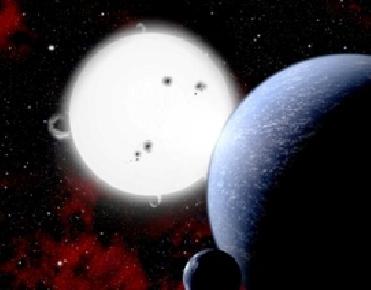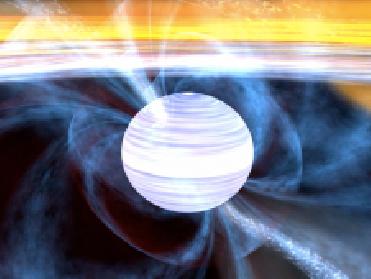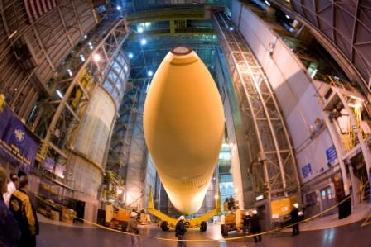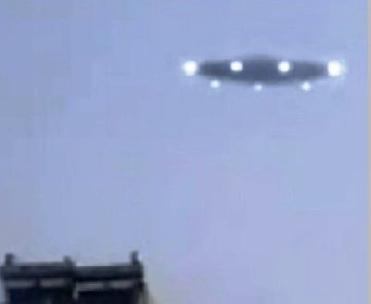
This artistic conception shows a hypothetical alien world and its moon orbit a hot, massive, type B star. CfA Photo by David A. Aguilar
WASHINGTON (BNS): Planetary formation is not merely confined to Sun-like stars but rather a natural occurrence even around stars much heavier than our Sun, scientists have found.
Studying a star-forming region ‘W5’ located 6,500 light-years away in the constellation Cassiopeia, a group of astronomers at the Harvard-Smithsonian Center for Astrophysics (CfA) and the National Optical Astronomy Observatory (NOAO) has found that planet formation is a natural by-product of star formation.
The team, by using NASA’s Spitzer Space Telescope and the ground-based Two Micron All-Sky Survey, observed over 500 type A and B stars which are about two to 15 times as massive as the Sun.
The researchers found that about one-tenth of the stars surveyed appear to possess dusty disks. Of those, 15 showed signs of ‘central clearing’ – suggesting that newborn Jupiter-sized planets are sucking up material.
“We see evidence of planet formation on fast forward,” said Xavier Koenig of the CfA, who presented the research at the 215th meeting of the American Astronomical Society here on Wednesday.
“The gravity of a Jupiter-sized object could easily clear the inner disk out to a radius of 10 to 20 astronomical units (Sun-Earth distance), which is what we see,” said Lori Allen of NOAO.
Interestingly, the planet formation process in both A and B-type stars is indeed a battle between opposing forces. On one hand, the stars' disks tend to be more massive and contain more raw materials to build planets. On the other hand, fierce stellar radiation and winds try to destroy the disks rapidly, the researchers found.
The new-found stars, however, are unlikely home to alien life, say the researchers.
The habitable zone, or region where liquid water could exist on a rocky surface, is at a greater distance from this type of stars than for Sun-like stars due to their greater luminosity. However, that luminosity comes at the price of a short lifetime. A and B stars live for only about 10 - 500 million years before running out of fuel.
“These stars aren't good targets in the hunt for extraterrestrials, but they give us a great new way to get a better understanding of planet formation,” said Koenig.
 Previous Article
Previous Article Next Article
Next Article












The Indian Air Force, in its flight trials evaluation report submitted before the Defence Ministry l..
view articleAn insight into the Medium Multi-Role Combat Aircraft competition...
view articleSky enthusiasts can now spot the International Space Station (ISS) commanded by Indian-American astr..
view article